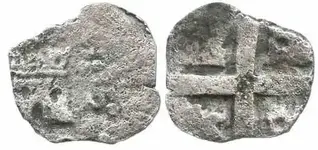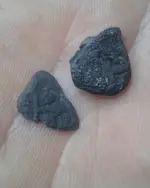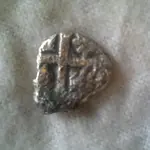Catching up on here, actually saw the thread looking at the "Finds" forum... we mean this piece, yes?:
www.treasurenet.com/forums/today-s-finds/388931-nice-spanish-cob-recovered-today.html
Mexico mint, 173_ date (last digit uncertain), 1 Real denomination. You can tell it's 1R just from looking at the size (unless Bill has huge hands :-> ), but the weight of course confirms it. Absolutely not cut down from a larger denomination... it's 1R as made, typical in strike/shape/proportion.
It is a very solid piece detail-wise, good imprinting of detail... Note, though, that this is rather typical for the late 1720s-early 1730s Mexican output. The planchets were usually fairly level in these years, allowing for good strikes and a near fully detailed planchet surface (no big unstruck areas). For this period, it is fairly common for much of the shield to show with perhaps part/most of the date, or at least mm/assayer, also visible. Additionally, there seem to be a decent quantity of pieces produced in these years as well (all denominations).
Looking more closely... it's definitely "173_"... can only be 1730, 31, 32 (Krause shows 32 as the last cob 1R, but let's consider 1733 as a possibility just in case). The assayer, which is partially visible, can be R, G, or F if 1730, and only F for 1731, 32, 33. You have to something to consider with that visible left side of the 4th digit and its positioning relative to the 3rd digit "3"... but more convincing is what can be seen of the assayer. Fairly confident you have a 1730G...
Keep in mind, the pieces below both have clear/bold dates (though yours obviously has better shield presentation)... the last one is a 2R shown for comparison:
Mexico City, Mexico, cob 1 real, 1730G.
Mexico City, Mexico, cob 1 real, 1730G/R, rare.
Mexico City, Mexico, cob 1 real, 1730, assayer uncertain.
Mexico City, Mexico, cob 2 reales, 1730G/R, rare.






